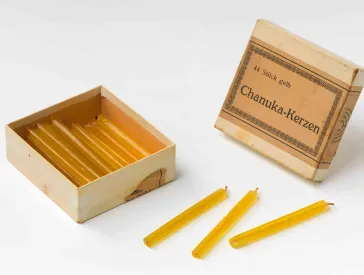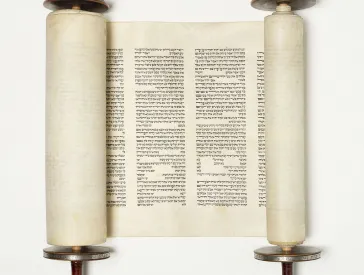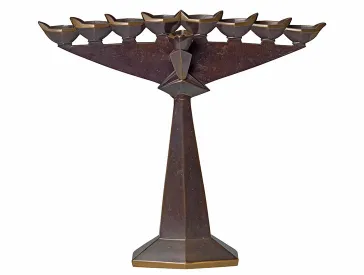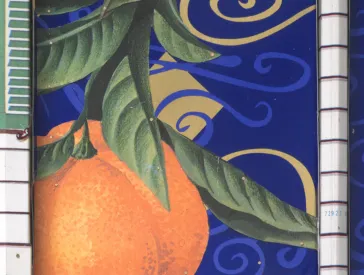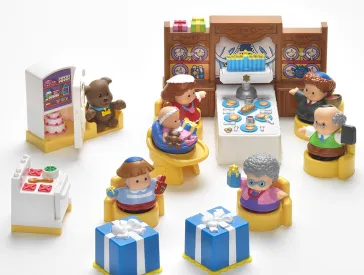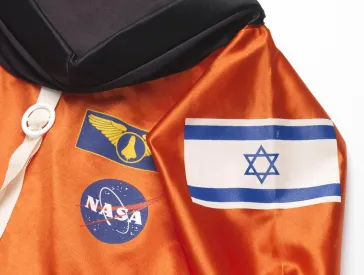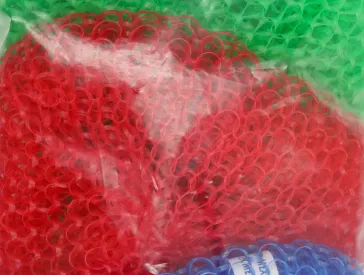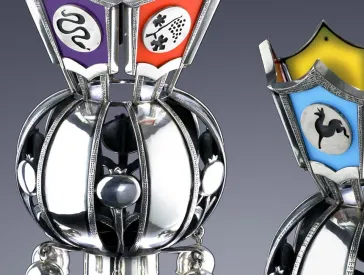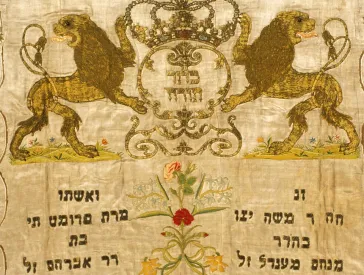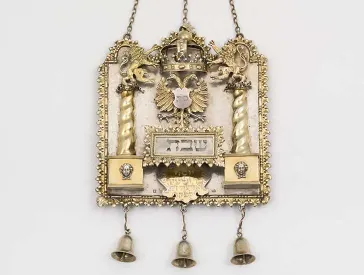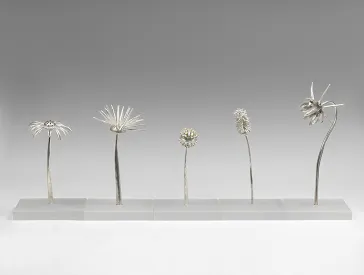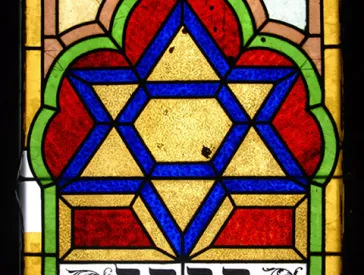Eighteenth-Century Recycling: From Wedding Dress to Torah Curtain
Object in Showcase
Moses Mendelssohn (1729–1786), the great Enlightenment philosopher, and his wife Fromet (1737–1812) presented a Berlin synagogue with this Torah curtain in 1774/75. In all likelihood, they had it made from Fromet's silk wedding dress.
Torah Curtain; Jewish Museum Berlin, accession KGT 97/1/0, purchased with funds provided by Stiftung Deutsche Klassenlotterie Berlin, photo: Roman März
Who is Fromet Gugenheim/Mendelssohn?
Fromet Mendelssohn, née Gugenheim (1737–1812), businesswoman and homemaker from Altona, daughter of a merchant, love marriage with Moses Mendelssohn in 1762; their letters document their relationship as intellectual equals
Who is Moses Mendelssohn?
Moses Mendelssohn (1729–1786), a leading philosopher of the Enlightenment who championed legal equality for Jews in Germany
Torah Curtain for the High Holy Days
Traditionally, a white curtain is hung in front of the Torah ark on Rosh Hashanah and Yom Kippur, the two most important Jewish holidays. The ark is where the Torah scrolls containing the text of the five books of Moses are kept.
Above the Hebrew dedication, our Torah curtain bears two lions symbolizing Judah, one of the Twelve Tribes of Israel. Keter Torah (Torah crown) is written beneath the crown. The columns adorned with wreaths of flowers and the small motifs on the valance are a reference to the Temple in Jerusalem.
The History of a Torah Curtain's Migration
Some years after Moses Mendelssohn's death in 1786, Fromet returned to her hometown of Hamburg. She took the Torah curtain with her, where it then adorned the Torah ark of the synagogue in the Altona district. Generations later, after the November Pogrom in 1938, refugees brought the curtain to Antwerp, Belgium. It received a place of honor there in the makeshift prayer room of a small refugee congregation. Leo Rothschild, the community warden, kept the ritual objects at his home when they were not being used in services. Following German occupation of Belgium in May 1940, his wife Betty gave the curtain – hidden under linens in a laundry basket – to one of her husband's business associates for safekeeping. Betty Rothschild and two of their sons were murdered in Auschwitz. Leo Rothschild and their son Josef survived. The Torah curtain made it through the war years unscathed.
| Title | Torah Curtain donated by Moses Mendelssohn and his wife Fromet Gugenheim |
|---|---|
| Collection | Judaica |
| Location and year of origin | Berlin, 1774/75 |
| Medium | silk, embroidered |
| Dimensions | 210 x 145 cm |
What is the Torah?
Torah (Hebr. for instruction), refers to the the first part of the Tanakh (Hebrew Bible), the five books of Moses, and more broadly, to the whole body of religious law
| Title | Torah Curtain donated by Moses Mendelssohn and his wife Fromet Gugenheim |
|---|---|
| Collection | Judaica |
| Location and year of origin | Berlin, 1774/75 |
| Medium | silk, embroidered |
| Dimensions | 210 x 145 cm |
Our painting restorer Barbara Decker explains why we cannot put the Torah curtain made of Fromet Mendelssohn’s wedding dress on permanent display in our exhibition in a video from our series “What We Won’t Show You.”
Selected Objects: Jewish Object: Judaica Collection (9)
